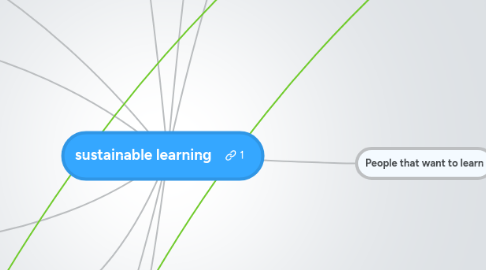
1. Bloom's Taxonomy of learning objectives
2. High quality "building blocks" to build tools and content
2.1. Copyright license for use of high quality graphics in the learning environment
2.1.1. Gina to enquire at TECFA
2.2. An environment that facilitates content generation
2.2.1. Templates for modules
2.2.1.1. for different types of skills/topics to master
2.2.1.2. based on learning theories
2.2.2. Learning modules, which consist of exercises to develop new modules ("creation" in Bloom's Taxonomy)
2.3. modular instructional design?
3. A Variation of Materials and methods that facilitate learning
3.1. Learning
3.1.1. Some theoretical constructs that are practical when trying to understand what "learning" is.
3.1.1.1. Learning styles
3.1.1.2. Learning theories
3.1.1.2.1. Kolb cycle of experiential learning
3.1.1.3. Theories on assessment
3.1.1.3.1. Formative
3.1.1.3.2. Summative
3.1.1.4. Bloom's Taxonomy of learning objectives
4. Support in
4.1. Finding out what the next appropriate challenge could be
4.1.1. Is this static? is this dynamic? for who is it similar? can we predict?
4.2. Learning about other peoples experiences learning the same subject/skill
4.2.1. mentoring
4.2.2. Community of Learner or Community of Practice or Knowledge building Community
5. Ask Wiki
5.1. Personal Learning environment
5.2. Virtual Learning environment
5.2.1. This article is the - inspirationless reality of what e-learning looks like today, I think -.. I still have the hope to discover it is different -- Paul
6. Sustainable
6.1. What it means in practice - result
6.1.1. Tools and content are kept up to date
6.1.1.1. Researches to develop the tools
6.1.1.2. Resources to develop the content
6.1.2. Quality of tools and content keeps improving
6.1.2.1. Resources and tools to improve quality to of tools
6.1.2.2. Resources and tools to improve quality of content
6.1.3. the right number of users
6.1.4. the right resources to support technical infrastructure
6.2. Wat it means in practice - process
6.2.1. Crowd sourcing development to end users
6.2.2. end users can take role of peer reviewer / peer review can be used as educational method
6.2.3. High quality motivational incentives for end users and developers (content, tools)
6.2.3.1. Game Theory explains the "how"
6.2.3.1.1. to reinforce behaviors we appreciate
6.2.3.1.2. e.g. get points, or data access for contributing "building blocks" etc... for a limited amount of time.
6.2.3.2. White paper on Games and Simulation
7. industry report re: LMS/ eLearning tools
8. How do we measure success ?
9. A variation of Tools & Methods that help you test if you learned something
10. People that want to learn
10.1. Teachers
10.2. Students
10.2.1. undergraduate
10.2.2. postgraduate / PhD
10.2.3. professionals
10.3. Patients
10.4. learner characteristics
11. Strategic Outcome
11.1. Define Ideal Learning
11.1.1. what strategic framework do we use to develop our ideal learning?
11.1.1.1. what is the future strategic context of our learning
11.1.1.1.1. current think
11.1.1.1.2. future think
11.1.1.2. what are the outcomes of our ideal learning?
11.1.1.2.1. learning outcomes?
11.1.1.2.2. materials and method outcomes?
11.1.1.2.3. sustainability outcomes?
11.1.1.2.4. support outcomes
11.1.1.3. what is required to achieve these outcomes?
11.1.1.4. what is the plan of action?
11.1.1.5. how will the plan be reviewed?
